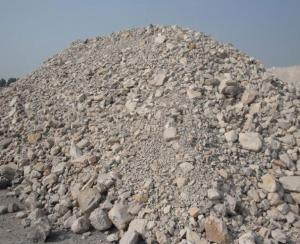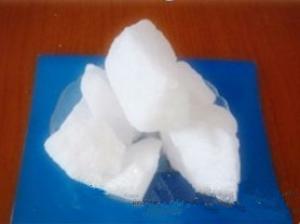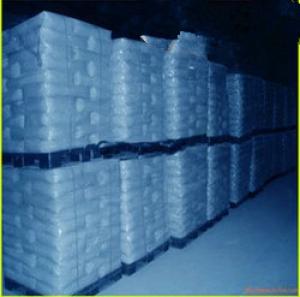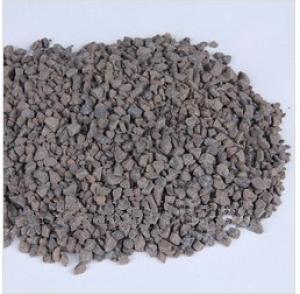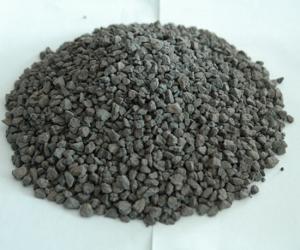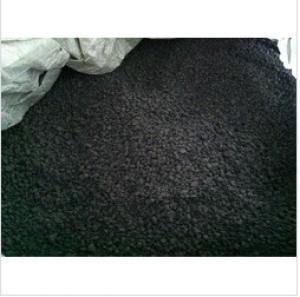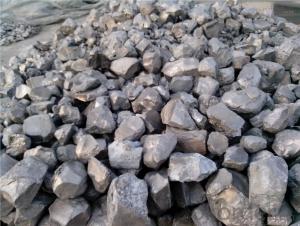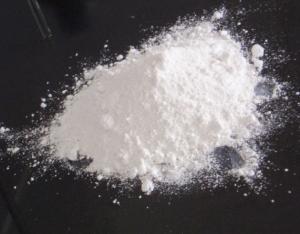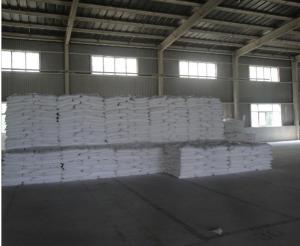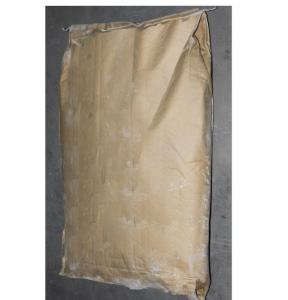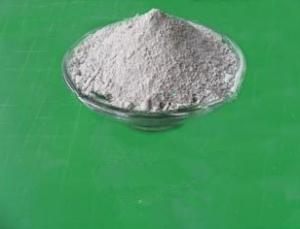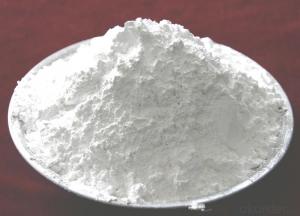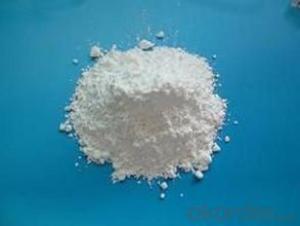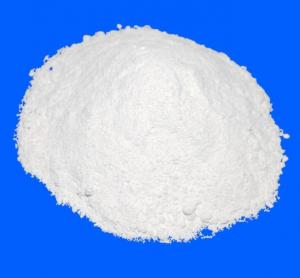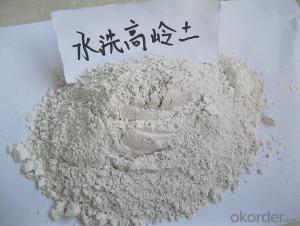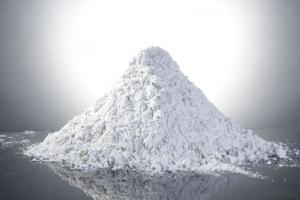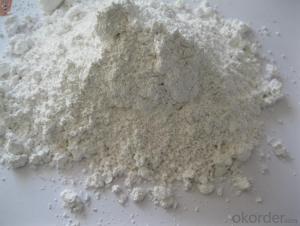China Clay/Ultra Fine & High Whiteness Calcined Kaolin For Papermaking
- Loading Port:
- China Main Port
- Payment Terms:
- TT or LC
- Min Order Qty:
- 12 Tons m.t.
- Supply Capability:
- 50000 Metric Tons per Year m.t./month
OKorder Service Pledge
OKorder Financial Service
You Might Also Like
Detailed Product Description
china clay/calcined kaolin specifications:
High-whiteness:94% min
Particle size(-2um,%):88-92
Oil absorbency(g/100g)63-73
china clay
|
[Product name]HS-901A Ultra Fine & Super White Calcined Kaolin [Character and Performance] The crystal is in laminar structure of pseudo-hexagonal kaolinite platelets. Super fine particle with narrow distribution, little residue on 325 mesh, and low abrasion; Great whiteness, covering power and light dispersion; A good extender of titanium dioxide. The coating with HS-901A has good performance in water-preserving, fluidity, viscosity and solid content. It can improve the property of paper such as whiteness, smoothness, opacity, ink absorbency, printability and luster. It is similar to Satintone 5HB. [Application] High-quality paper-making such as light-weight coated paper, coated art paper and paper board, and ink, etc. [Physical specification]
[Chemical specification]
|
- Q:What are the surface modification technologies of calcined kaolin and the matters needing attention?
- The surface modification of calcined kaolin should be done by heating the calcined kaolin in order to react with silane coupling agent and requiring kaolin to maintain a certain temperature in the dynamic state. Only in this way can the excess water in the reaction process and reaction be removed so as to form a stable and firm covalent bond with kaolin. Therefore, it is necessary to determine the surface modification process according to the mechanism of surface modification.
- Q:What is the role of kaolin in plastics? What's the role of kaolin in plastic formulations?
- The role of calcined kaolin is filler, not the color of paint, hiding force plays an obvious role, but only increase the solid componentIncrease weight.
- Q:What is the good or bad of kaolin to distinguish? What is its criterion?What percentage does it contain and what element does it contain?
- Kaolin is a kind of soft clay mineral and two non clay mineral, which are mainly composed of kaolinite and sub group minerals. Kaolinite minerals are mainly composed of small tabular or tubular kaolinite minerals of less than 2 m, Al4 [Si4O10] (OH) 8. Because of its hydrous aluminosilicate chemical composition, layered structure and particle size, it has many special properties which are not available in general minerals. The extensive use of kaolin is inseparable from its excellent physical properties. Pure kaolin with high whiteness, soft and easy to disperse suspended in water, refractoriness physicochemical performance, good plasticity and high adhesion, excellent electrical insulation properties and the acid solution, good low cation exchange capacity, high.
- Q:Are there any differences between bentonite and kaolin?
- Bentonite (Bentonite) predominantly montmorillonite aqueous clay minerals. The chemical composition of montmorillonite: (Al2, Mg3) Si4O10 OH2 nH2O, because it has special properties such as swelling, adhesion, adsorption, catalysis, thixotropy, suspension and cation exchange. So widely used in various industrial fields.
- Q:What's the difference between kaolin and clay?
- Kaolin is mainly composed of less than 2 microns of small flaky, tubular, laminated and other kaolinite cluster mineralsKaolinite minerals: cluster by kaolinite, dickite, nacrite, halloysite etc., chemical formula and ideal for AL2O3-2SiO2-2H2O, the main mineral is kaolinite kaolinite and kaolinite mineral water, in addition to the cluster, and montmorillonite, illite, Ye Lashi, quartz and feldspar and other minerals associated with the chemical constituents in the kaolin. Contains a large number of AL2O3, SiO2 and a small amount of Fe2O3, TiO2, Na2O, K2O and trace amounts of CaO and MgO.
- Q:The difference between bauxite, kaolin and clay
- Aluminum ore is actually refers to the industry can use, in order to gibbsite, boehmite and diaspore as the main mineral composition of the ore collectively. Application of bauxite has two aspects of metal and non-metal is the best raw material for the production of metal aluminum, and it is also the main application areas.
- Q:What is the difference between diatomite and kaolin? Thank you
- Diatomite is composed of amorphous SiO2 and contains a small amount of Fe2O3, CaO, MgO, Al2O3 and organic impurities. Diatomite usually pale yellow or pale gray, soft, porous and light industry often used as insulation materials, filter materials, fillers, abrasive materials, water glass raw materials, decoloring agent of diatomite filter agent, catalyst carrier etc..
- Q:Where are the main differences between kaolin and kaolinite?
- Kaolin is a nonmetallic mineral, a kind of clay and clay rock mainly composed of kaolinite group clay minerals. Because of the white and delicate, also known as "white cloud soil.". [1] was named after kaolin village in Jiangxi, Jingdezhen province.Its pure kaolin is white, fine and soft, and it has good plasticity and fire resistance. The mineral composition is mainly composed of mineral kaolinite, halloysite, illite, illite, montmorillonite and quartz, feldspar etc.. Kaolin is widely used, mainly used for papermaking, ceramics and refractories, secondly used in coating, rubber filler, enamel glaze and white cement raw materials, a small amount of paint, paint, plastic, used for grinding wheel, pencil, soap, cosmetics, pesticide, medicine, textile, petroleum, chemical industry, building materials, defense and other industrial sectors.
- Q:What's the difference between kaolin and kaolin?
- Effects: 1., firing pottery,.2. firing pottery or coarse porcelain kaolinRefers to the clay containing iron and gray white, red brown, purple and other colors, with good plasticity of the clay mineral composition of montmorillonite, kaolin.. clay is mainly used as exterior wall tiles, pottery, burning out.
- Q:What is the porcelain glaze porcelain
- Porcelain clay is mainly used for the production of porcelain, porcelain clay or kaolin, is the main raw material for ceramics.
1. Manufacturer Overview |
|
|---|---|
| Location | Inner Mongolia, China (Mainland) |
| Year Established | 2005 |
| Annual Output Value | |
| Main Markets | South America Eastern Europe Southeast Asia Africa Oceania Mid East Eastern Asia Western Europe |
| Company Certifications | Certificate of Quality Management System Certification;Certificate of Environment Management System Certification |
2. Manufacturer Certificates |
|
|---|---|
| a) Certification Name | |
| Range | |
| Reference | |
| Validity Period | |
3. Manufacturer Capability |
|
|---|---|
| a)Trade Capacity | |
| Nearest Port | |
| Export Percentage | 21% - 30% |
| No.of Employees in Trade Department | |
| Language Spoken: | |
| b)Factory Information | |
| Factory Size: | Above 100,000 square meters |
| No. of Production Lines | 1 |
| Contract Manufacturing | |
| Product Price Range | |
Send your message to us
China Clay/Ultra Fine & High Whiteness Calcined Kaolin For Papermaking
- Loading Port:
- China Main Port
- Payment Terms:
- TT or LC
- Min Order Qty:
- 12 Tons m.t.
- Supply Capability:
- 50000 Metric Tons per Year m.t./month
OKorder Service Pledge
OKorder Financial Service
Similar products
New products
Hot products
Related keywords
